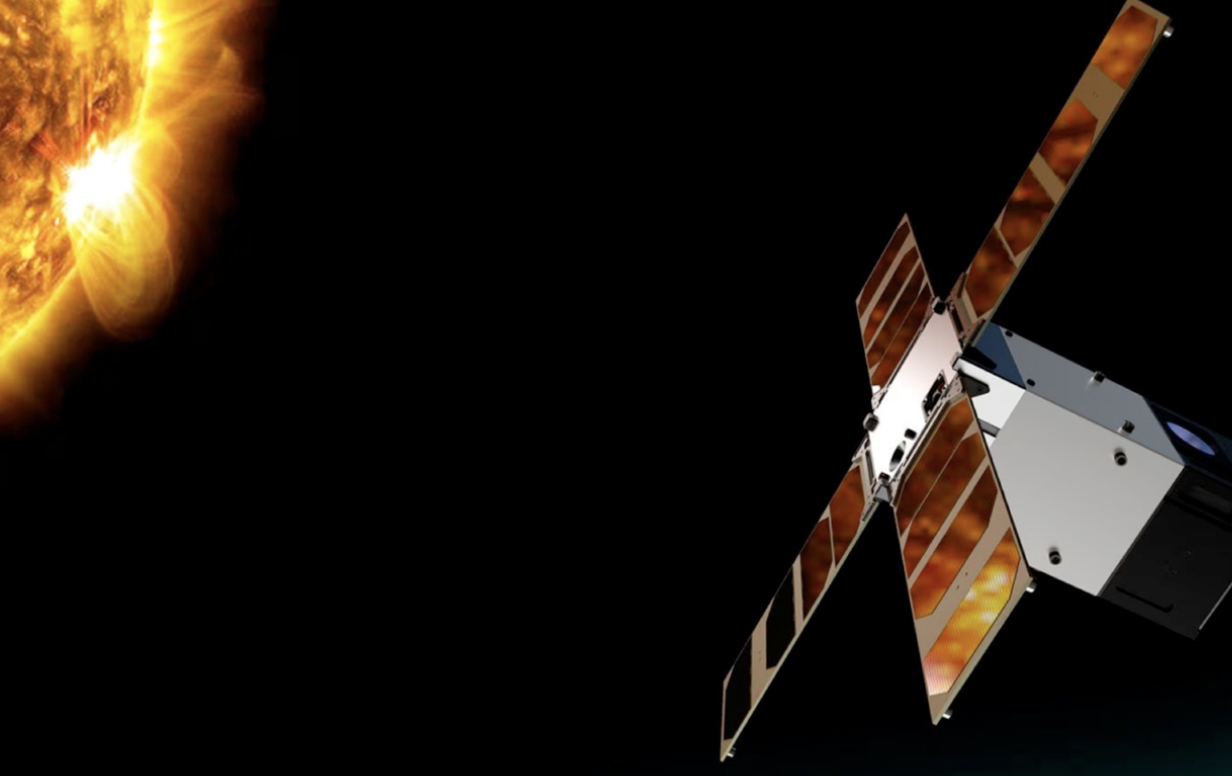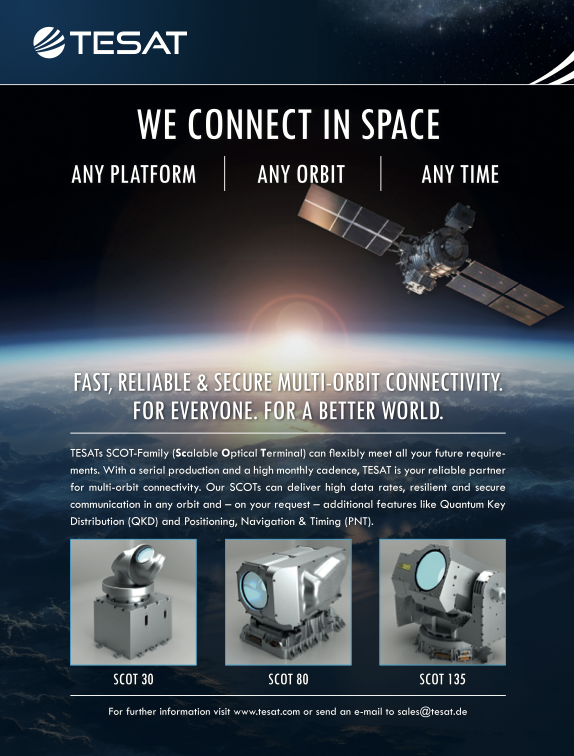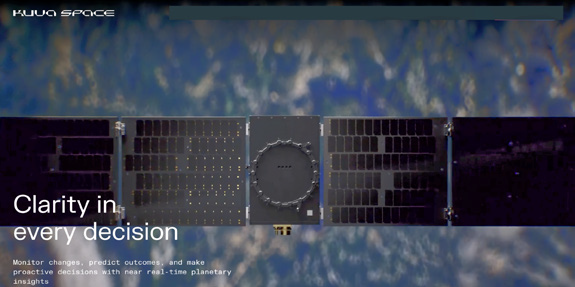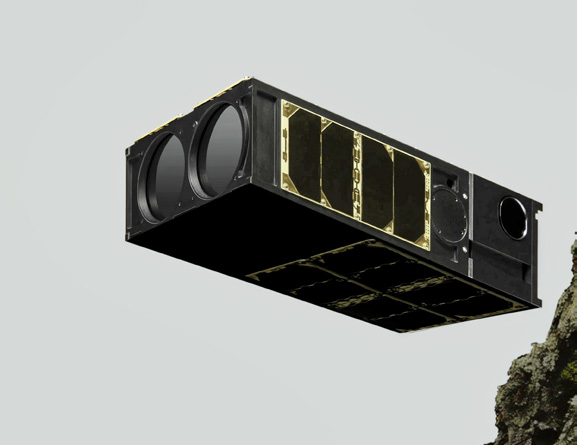Tuomas Tikka, Founder, Chief Technology Officer and Board Member, Kuva Space
The idea of a unified, European Union (EU) space law is developing slowly, but many in the industry are questioning whether more regulation is what Europe’s space sector needs now.
 The Kuva Space Sunstorm satellite, pictured here, was a joint project of Kuva Space and Isaware, designed to monitor solar X-ray flares with its cutting-edge X-ray Flux Monitor (XFM-CS). The mission’s primary goal was to collect high-resolution data to advance our understanding of solar eruptions and space weather phenomena.
The Kuva Space Sunstorm satellite, pictured here, was a joint project of Kuva Space and Isaware, designed to monitor solar X-ray flares with its cutting-edge X-ray Flux Monitor (XFM-CS). The mission’s primary goal was to collect high-resolution data to advance our understanding of solar eruptions and space weather phenomena.
For startups in particular, the push for EU-wide legislation risks stifling innovation that’s currently driving growth in the New Space sector, and creating more confusion.
________________________________
Unknowns at the EU Level
________________________________
The European Commission (EU) has begun exploring a common legal framework for space activities across member states. A public questionnaire was recently released to gauge the need for regulation, with goals that include sustainability in orbit and reducing space debris.
 However, one of the core challenges is that the details remain vague. It’s unclear what companies would be expected to follow, or how enforcement would work.
However, one of the core challenges is that the details remain vague. It’s unclear what companies would be expected to follow, or how enforcement would work.
These early discussions have even prompted questions within national ministries. Without a concrete proposal, operators can’t know whether such a law will simplify or complicate their work.
_________________________________________
Why National Space Laws Matter
_________________________________________
For countries that already have national space laws, such as Finland, France, and Germany, there is concern that EU-level rules could duplicate or contradict existing frameworks.
Some national laws are relatively straightforward, allowing for faster decision-making. Finland’s model, for example, offers companies a clear understanding of what is. and what isn’t, allowed. That kind of visibility is essential for businesses trying to move quickly and scale new technologies.
 National frameworks also tend to be more adaptable. Local governments can revise rules based on new technologies or evolving needs, while EU legislation often takes longer to develop and implement.
National frameworks also tend to be more adaptable. Local governments can revise rules based on new technologies or evolving needs, while EU legislation often takes longer to develop and implement.
Patchwork Laws and Regulations Around Europe
Not every country has a space law in place. This creates a legal gray area, allowing companies to launch satellites without the same level of oversight.
In one case, a satellite launched by a company from a country without national regulations ended up in a high orbit, around 600 kilometers, where it won’t deorbit for more than 100 years. That
breaks with the widely accepted 25-year rule for space debris mitigation recommended by the United Nations (UN).
In these cases, EU-level guidelines could help set a baseline. Encouraging all member states to establish national legislation would be a significant step toward more consistent and responsible space operations.
_______________________________
New Space vs. Old Space
_______________________________
One of the biggest concerns is that new EU regulations could end up favoring large aerospace contractors. Major players such as Airbus operate on longer timelines and often have the resources and funding to manage lengthy and slow regulatory processes.

Kuva Space's Hyperfield-1
But for startups, speed and agility are critical. Waiting months for approvals could be the difference between making it to market or missing a launch window.
There’s also the question of resources. If the EU passes a law but relies on member states to enforce it, as is the case with the EU AI Act, then smaller countries may fall behind.
Some nations may be able to dedicate large teams to regulatory support, while others may have only a handful of people managing compliance. The result would be an uneven playing field across the continent.
_______________________________
Tackling Space Debris
_______________________________
Operators are receiving collision warnings nearly daily. Although the overall risk of an impact remains low, under 0.1% over a satellite’s orbital lifetime, the number of objects in orbit continues to grow drastically.
A large communication satellite constellation, like Starlink, is already comprised of thousands of satellites. Even a single debris-generating event can create thousands of new collision risks.
Most companies support the development of stronger space traffic management systems, especially as orbits become more congested. However, the current setup, which relies on national authorities and fragmented data, is insufficient.
There’s no real enforcement mechanism if a satellite is left in orbit long past its useful life. Every country retains the right to launch, even if it increases long-term risk.
________________________________________________________
Finding the Correct Balance Moving Forward
________________________________________________________
Some regulation is necessary. Without clear, practical rules in place, space debris is only going to get worse—and that’s a real problem for anyone planning long-term operations in orbit.
However, if the EU implements overly complex or industry-specific regulations, it is the smaller companies that will be adversely affected. These are often the ones driving innovation, but they also have the lowest resources to navigate heavy regulatory demands.
A more balanced approach could involve setting high-level EU recommendations while allowing individual countries to maintain or refine their national laws. This would give emerging space nations a roadmap to follow, without slowing down those already operating under effective frameworks.
Europe’s space ecosystem needs growth and to narrow the gap between Europe and the U.S., particularly for startups. The priority now should be creating dynamic conditions where responsible innovation can continue, without adding unnecessary obstacles for the companies building innovative solutions for a safer and sustainable future.
kuvaspace.com

Tuomas Tikka
Author Tuomas Tikka has a MSc.(Tech.) in Space Technology from Aalto University, Finland. During his doctoral studies at Aalto University, he was one of the key people in building Finland’s first satellite, which was launched in 2017, and received Finland’s Engineer of the Year Award for it in 2018. In 2016, he co-founded Kuva Space (previously Reaktor Space Lab) to commercialize nanosatellite technology and related services and served as CEO for the first five years. Since 2021, Tuomas has served as the CTO of Kuva Space and is responsible for developing the Hyperfield constellation and related services. He is also a member of Kuva Space’s board of directors.

